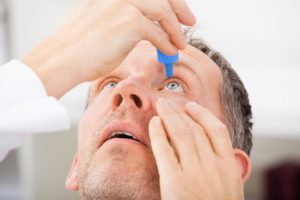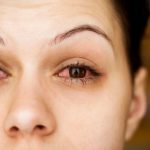 Sjögren’s syndrome is an autoimmune condition, which means the immune system attacks its own healthy cells because it perceives them as a threat. Below is everything you need to know about Sjögren’s syndrome, from symptoms to diagnosis and treat.
Sjögren’s syndrome is an autoimmune condition, which means the immune system attacks its own healthy cells because it perceives them as a threat. Below is everything you need to know about Sjögren’s syndrome, from symptoms to diagnosis and treat.
What is Sjögren’s syndrome?
Sjögren’s syndrome (SHOW-gren) is an autoimmune condition characterized by dry mouth and dry eyes. Sjögren’s syndrome is often seen along with other conditions, such as rheumatoid arthritis and lupus. Sjögren’s syndrome affects the mucous membranes and moisture-secreting glands in the mouth and eyes, thus causing a decrease in saliva and tears.
Advertisement
The American College of Rheumatology estimates that between 400,000 and 3.1 million adults are affected by Sjögren’s syndrome. The condition was coined by Swedish physician Henrik Sjögren who defined a group of women’s arthritis that was accompanied by dry mouth and dry eyes. Today, the syndrome is named after the physician and researchers and doctors know much more today than they did in the early 1900s.
Sjögren’s syndrome causes and risk factors
As an autoimmune condition Sjögren’s syndrome is caused by the immune system mistakenly attacking its own healthy cells and tissues. Like other autoimmune conditions the exact cause for this is still largely unknown. Researchers have found that certain genes may increase the risk of developing Sjögren’s syndrome, but the presence of an infection or bacteria may increase risk as well.
Moisture-secreting glands that are targeted with Sjögren’s syndrome are:
- Joints
- Thyroids
- Kidneys
- Liver
- Lungs
- Skin
- Nerves
Although Sjögren’s syndrome can affect anyone at any age, it is most commonly seen among older women and is commonly found in connection with other conditions, such as rheumatoid arthritis and lupus.
Sjögren’s syndrome symptoms
 The main symptoms of Sjögren’s syndrome are dry mouth and dry eyes. Accompanying symptoms include:
The main symptoms of Sjögren’s syndrome are dry mouth and dry eyes. Accompanying symptoms include:
- Joint pain, swelling, and stiffness
- Swollen salivary glands
- Skin rashes or dry skin
- Vaginal dryness
- Persistent dry cough
- Prolonged fatigue
Sjögren’s syndrome diagnosis
Complications may arise when diagnosing Sjögren’s syndrome due to the variety of symptoms one may endure and the overlap of symptoms with other conditions. Furthermore, many side effects of medications can imitate symptoms of Sjögren’s syndrome making it even more confusing.
There are four main types of testing when it comes to diagnosing Sjögren’s syndrome: Blood test, biopsy, eye test and imaging.
Blood test: Your doctor may check for varying levels of different blood cells, presence of antibodies for Sjögren’s syndrome, inflammatory conditions and problems with the liver and/or kidneys.
Eye test: Dryness of the eye can be tested with a Schirmer tear test. Filter paper is placed underneath the eyelid to measure tear production. The surface of the eye may also be examined by a specialized.
Imaging: Imaging tests used to help diagnose Sjögren’s syndrome are sialogram and salivary scintigraphy. The first test determines how the salivary glands of the eye are working and the second measures how long it takes an injected dye to reach the salivary glands.
Biopsy: A biopsy is conducted from the salivary glands and examined for a cluster of inflammatory cells.
Sjögren’s syndrome treatment
There are two main ways to treat Sjögren’s syndrome: Medication and surgery. Medications used to treat Sjögren’s syndrome work to increase saliva production, address specific complications such as arthritis or yeast infections of the mouth, and treating system-wide symptoms – malaria treatments have shown to be successful in treating Sjögren’s syndrome.
In the case of surgery, a minor surgery to seal the tear ducts in the eye may be requested. Collagen or silicone plugs may also be used for temporary closure. Sealing the tear ducts is used to treat Sjögren’s syndrome because they are responsible for tears to be drained. If tears are not drained they can keep the eye lubricated.
Diet to treat Sjögren’s syndrome
Although there is no cure for Sjögren’s syndrome, diet changes can better help relieve symptoms as well as reduce inflammation, which can improve other conditions that may exist along with it.
 The Sjögren’s Syndrome Foundation recommends the following foods to help reduce inflammation.
The Sjögren’s Syndrome Foundation recommends the following foods to help reduce inflammation.
- Colorful whole fruits and vegetables
- Healthy fats including omega-3, such as avocados and nuts
- Moderate amounts of meat – try to stick with organic when possible
- Spices and herbs like garlic, ginger and turmeric
Advertisement
On the other hand, the foundation also suggests foods you should limit as they can create painful inflammation.
- Trans or hydrogenated fats
- Refined oils
- High glycemic or processed foods
- Red meat
- Common food allergies
- Artificial sweeteners and preservatives
By knowing what you should and shouldn’t eat you can better live day-to-day with Sjögren’s syndrome.
Home remedies for Sjögren’s syndrome
Aside from consuming a diet containing low-inflammatory foods, there are other home remedies that can better help you live with Sjögren’s syndrome.
 Use artificial tears or eye lubricants.
Use artificial tears or eye lubricants.- Increase humidity in your home.
- Drink more water.
- Stimulate saliva flow by chewing gum or consuming hard candies, but be cautious as Sjögren’s syndrome increases the risk of cavities – go sugarless whenever possible.
- Use a nasal saline spray.
- Brush your teeth and floss after every meal.
- See your dentist at least every six months.
- Use a topical fluoride.
- If skin is dry avoid hot showers and pat yourself dry instead of wiping yourself. Apply moisturizer on skin when still damp and wear rubber gloves when washing the dishes.
